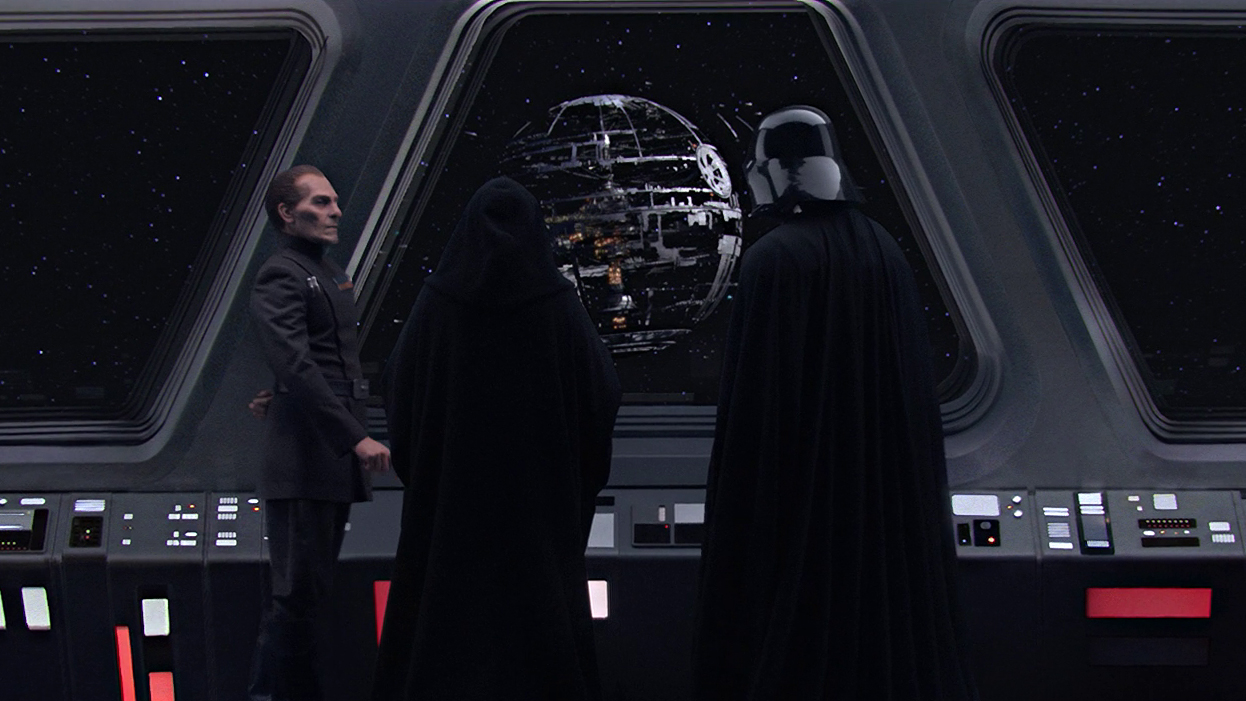How to build a Death Star

Rogue One is out this week, and the first Star Wars anthology movie (that's not part of the new trilogy) brings us an exciting story set just before Star Wars: A New Hope, when the Death Star, the Empire's huge planet-destroying weapon, was still being built.
While the story of the Death Star's creation makes for fantastic Sci-Fi action, is it actually feasible to build a Death Star in real life? Would you want to? What would the repercussions be?
These thoughts raced through my mind when my editor emailed to tell me he wanted to know how to build a Death Star. "Could we actually build a real working death star in space?" he asked. I looked at the email reply window. I couldn't say "no." I knew what a "no" would mean.
So I rang the European Space Agency, and asked for their foremost expert on Death Stars. They gave me Kim Nergaard, the head of their Advanced Mission Concepts Office, who was on holiday in Britain when I called him up and informed him of my mission.
I asked if the European Space Agency happened to have a death star secretly in development that I could crib from. "At the moment, there are no plans for building a Death Star," he told me. "However, we are doing the first steps. We've started preparing for a human base on the Moon. So before building a full-on Moon-sized Death Star, maybe the first step should be to use the Moon that we have and start transforming that into something like a Death Star."
He's talking about recently-announced plans for a collaboration with Russia's space agency ROSCOSMOS to explore an area of the Moon's south pole that might be suitable for a manned moonbase. But I needed to know about a Death Star, not its precursors. "A real-life, full-sized Death Star you mean?" he said. "Yes", I said. "OK. If everyone wanted to do it, and the world became ruled by a dictator who also wanted this, then I guess you could do a smaller version of it in the next 30-50 years."
That smaller version, Nergaard says, would be around the same size as the International Space Station (about 110 metres across) but spherical. Anything larger – approaching the size of either of the Death Stars seen in Star Wars – would take hundreds of years with conventional shooting-it-up-in-a-rocket technology.
Sign up for breaking news, reviews, opinion, top tech deals, and more.

Instead, a better solution might be to capture a metallic asteroid, put it into Earth's orbit, and use that for materials instead. We've got the technology to do that today, but it would take a long time to find the right asteroid and alter its orbit to get it around Earth.
In terms of materials, Nergaard says the best options for building a Death Star would be strong and lightweight, meaning mostly aluminium and modern composites. But there are two problems with that approach, he said. Firstly, it'd be too weak to withstand any kind of attack. Secondly, and perhaps more importantly, when it left the Earth's orbit everyone inside would slowly die of radiation poisoning.
"What?" I said. Turns out that the Earth has a magnetic field that protects us from the space radiation that does significant long-term damage to anyone leaving the planet. "This will, by the way, also be a problem when going to Mars," said Nergaard. "A more serious problem than I think many people consider." To fix that, you'd need heavier, denser materials like lead – and getting those into orbit would dramatically expand the timescales involved.
